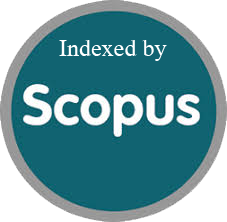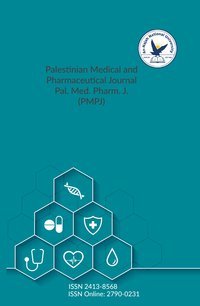Health-promoting behaviors among patients with coronary artery disease in Palestine
Authors:
Article info
2022-03-03
2022-06-12
51 - 62
Keywords
- Cognition And Af-fect Social Support
- Coronary Artery Disease
- Health-Promoting Behaviors
- Healthy Lifestyle
Abstract
Even though many chronic diseases result from unhealthy behaviors such as physical in-activity, high-fat diets, and smoking, these health behaviors are rarely controlled by coronary artery disease (CAD) patients. This study aimed to describe health-promoting behaviors ( HPB) and their predictors in patients with coronary artery disease. In this cross-sectional study, 178 participants with coronary artery disease from three primary healthcare clinics in Palestine were recruited. Health-Promoting Lifestyle Profile II was used to measure health-promoting behaviors, the Behavior-Specific Cognitions and Affect scale to measure cognition and affect, and the Multidimensional Scale of Perceived Social Support to measure social support was used. Hierarchical multiple regression analysis was performed to examine the predictive variables on health-promoting behaviors. The mean age of the participants was 53.7 years (SD=14.1). Most participants reported practicing moderate HPB (50.6%) or excel-lent HPB (2.8%). The mean lifestyle score was 123.7(SD=21.8), which lies in the moderate lifestyle level; the nutrition subscale had the highest score (M=24.3, SD=4.8), while the phys-ical activity subscale had the lowest score (M=15.2, SD=4.4). Participants practice of HPB correlated negatively with age, BMI, and CCI total scores (r = −0.190, r = −0.191, r=−.247, respectively) and positively with behavior-specific cognitions and affect and social support(r =.473, r =.229). A significant difference based on gender, current smoking of cigarettes, cur-rent argilla use, marital status, level of education, and work status (t=2.189, t=-2.888, t=-3.109, F=-3.208, F=4.557, F=8.430, respectively);. For the first time in Palestine, it was demonstrated in this study that HPB levels among CAD patients are moderate to good. The authors underline the significance of developing policies to improve HPB practices.
Health-promoting behaviors among patients with coronary artery disease in Palestine
المؤلفون:
معلومات المقال
2022-03-03
2022-06-12
51 - 62
الكلمات الإفتتاحية
- Cognition And Af-fect Social Support
- Coronary Artery Disease
- Health-Promoting Behaviors
- Healthy Lifestyle
الملخص
Even though many chronic diseases result from unhealthy behaviors such as physical in-activity, high-fat diets, and smoking, these health behaviors are rarely controlled by coronary artery disease (CAD) patients. This study aimed to describe health-promoting behaviors ( HPB) and their predictors in patients with coronary artery disease. In this cross-sectional study, 178 participants with coronary artery disease from three primary healthcare clinics in Palestine were recruited. Health-Promoting Lifestyle Profile II was used to measure health-promoting behaviors, the Behavior-Specific Cognitions and Affect scale to measure cognition and affect, and the Multidimensional Scale of Perceived Social Support to measure social support was used. Hierarchical multiple regression analysis was performed to examine the predictive variables on health-promoting behaviors. The mean age of the participants was 53.7 years (SD=14.1). Most participants reported practicing moderate HPB (50.6%) or excel-lent HPB (2.8%). The mean lifestyle score was 123.7(SD=21.8), which lies in the moderate lifestyle level; the nutrition subscale had the highest score (M=24.3, SD=4.8), while the phys-ical activity subscale had the lowest score (M=15.2, SD=4.4). Participants practice of HPB correlated negatively with age, BMI, and CCI total scores (r = −0.190, r = −0.191, r=−.247, respectively) and positively with behavior-specific cognitions and affect and social support(r =.473, r =.229). A significant difference based on gender, current smoking of cigarettes, cur-rent argilla use, marital status, level of education, and work status (t=2.189, t=-2.888, t=-3.109, F=-3.208, F=4.557, F=8.430, respectively);. For the first time in Palestine, it was demonstrated in this study that HPB levels among CAD patients are moderate to good. The authors underline the significance of developing policies to improve HPB practices.
Since 2022
Cite Score (Scopus): 0.8
Time to First Decision: 3 Days
Submission to Acceptance: 45 Days
Acceptance to Publication: 64 Days
Acceptance Rate: 17%
Why should you
Publish With Us?
An-Najah National University
Nablus, Palestine
Nablus, Palestine
- P.O. Box
- 7, 707
- Fax
- (970)(9)2345982
- Tel.
- (970)(9)2345560
- (970)(9)2345113/5/6/7-Ext. 2628
- [email protected]
- EIC
- Prof. Waleed Sweileh
The Palestinian Medical and Pharmaceutical Journal (Pal. Med. Pharm. J.) © 2024 by An-Najah University, Nablus, Palestine is licensed under CC BY-NC 4.0
News and Views
